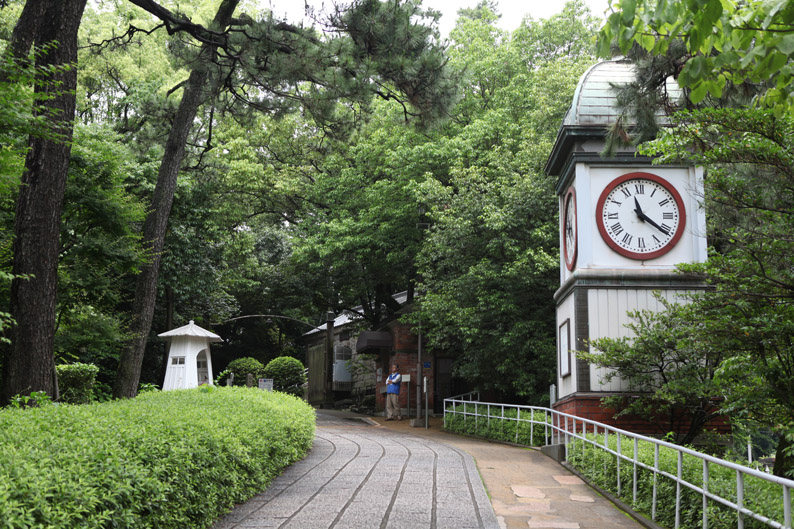It was once again my mentor Dr Keiko Tamura, who recommended me to visit the grounds of the Irifuneyama Memorial Museum, which include the former official residence of generations of Naval Commander-in Chiefs of Kure, and after WWII, that of the BCOF’s Commander of the Allied Forces.

Although the Kure City Maritime Museum, commonly known as the Yamato Museum, is seemingly the most popular tourist destination in Kure, boasting 10 million visitors in the first 10 years of operation since it opened its doors in 2005, as a student of Australia – Japan relations, it was important for me to visit during my very brief stay in Kure, the Irifune Memorial Museum and the Naval Academy on nearby Eta Island, because they were both places where the Australians as part of BCOF was stationed.

Climbing up the hill from the entrance of the Irifuneyama Memorial Museum, passing the clocktower and the guard post, was a small building where a volunteer guide stood. He introduced himself to me eagerly, and welcomed me as if I was a foreign dignitary on an official visit. There appeared to be no other visitors that morning, and former residence of the Commanders, both Japanese and Australian, was very quiet, empty and serene.

At the entrance of former residence with a Western style frontage, another volunteer guide welcomed me, and was eager to show me around. He told me about the architecture of the building, designed by an English trained Japanese architect with a Western style wing for the Commander’s public quarters and a Japanese style wing for his private quarters.

When I let him know I was interested in the Australians, he explained to me at great length, in the most diplomatic manner, how the foreign occupiers had changed the décor of the residence to their cultural tastes, painting white paint over their valued unique wall and ceiling feature decorated with kinkara-kami, which is a rare type of gold-embossed paper. Since, the City of Kure and the Museum have reproduced the original patterns as wallpaper of this building as part of their restoration process. As there are now very few people with knowledge of the making of the kinkara-kami, they hold workshops to preserve the knowledge. He then explained to me in painstaking detail, how to make kinkara-kami. He added in the end, that although regrettable, it cannot be helped, that all cultures have their own recognition of taste and aesthetics.
Although according to Takashi Ueda, a representative of Kinkarakami Institute in Tokyo, the kinkara-kami was highly sought after in Europe and America at the turn of the 19th century and was actively exported, and can still be found in Western buildings, one of which is at Rippon Lea, a National Heritage Listed heritage site in Melbourne, Australia.

 Add to favorites
Add to favorites
I visited Kure as an 18 year old , Cadet in the Australian cargo ship “Baralga”in 1961. We had brought 6000 tonnes of Australian coiled steel from Port Kembla. This is almost unbelievable in 21 st century Australia where we import everything.I remember how the Kure high school children in naval style uniform excitedly approached us to practice their English language, and how friendly the people were when they found that we were Australian. Great memories. Adrian Murray
Thank you, Adrian. It sounds like you had a great time in Kure!